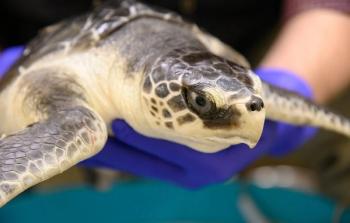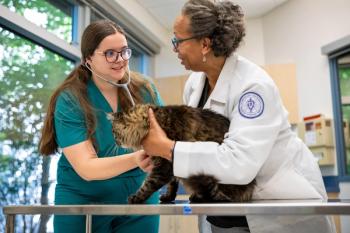
AVMA summit: Good news on excess capacity, bad news on veterinary degree ROI
Economists predict better employment situation than previously forecast but picture is bleak on lifetime payoff.
A survey conducted by the American Veterinary Medical Association (AVMA) Veterinary Economics Division shows that 51 percent of veterinarians are working at full capacity vs. 35 percent in 2012. AVMA economists presented the findings at the annual AVMA Economic Summit Oct. 28 in Chicago.
Overall excess capacity in the profession is at 13 percent (meaning 13 percent of veterinarians' capacity to provide services is going unused), down from 17 percent two years ago, and predictions are that it will continue to decline over the next few years and stabilize at about 6 percent through 2025. Food animal and equine veterinarians have seen the greatest return toward full capacity.
A number of factors-or “macroeconomic assumptions”-are at play in this forecast, but most important are improved projections in consumer spending from the Congressional Budget Office. “In the next 12 to 18 months we're going to see very real growth in the economy,” said AVMA Economics Director Michael Dicks, PhD, to a group of about 200 veterinarians, academicians and economists.
The AVMA's Veterinary Economics Division has continued conducting research and analyzing publically available data in the wake of the
The AVMA conducted four economic surveys in 2014, including an employment survey, a survey of senior veterinary school students, a biennial economic survey and a capacity utilization survey. The Association of American Veterinary Medical Colleges (AAVMC) also conducted a survey of veterinary college applicants. The surveys will continue annually, and new surveys will be added as the need arises, Dicks said.
Another economic analysis paints a fairly bleak picture of the state of the profession. Dicks and colleagues calculated what they call the “net present value” of a veterinary degree for various segments of the profession. They found that the return on investment for a veterinary education is negligible for companion-animal-exclusive veterinarians and negative for mixed-animal , food animal and equine veterinarians. (See
While current demand for educational services exceeds supply, Dicks says, future supply is likely to exceed demand. The number of veterinary school seats will continue to increase until 2018 and then flatten, he predicts, while the cost of education will keep rising. “The ROI for a veterinary education is negative and will continue to be for some time,” Dicks says.
Here are some other highlights from the summit:
> While increases and decreases in the number of applicants per available veterinary school seat are cyclical in nature, the profession is seeing a drop in the number of applicants per seat. This is due largely to the opening of new AAVMC-member schools, increasing enrollment at current colleges and U.S. students choosing to study at international veterinary schools, said Lisa Greenhill, MPA, EdD, an associate executive director with the AAVMC. In 1980 there were 3.59 applicants per seat, in 1998 there were 2.95, and in 2013 there were 1.64. “The ratio could fall below 1.1 within five years given current conditions,” Greenhill said. “This could be a threat to the long-term viability of some institutions.”
> Gender disparity was evident in many research findings. For example, according to Bridget Bain, PhD, a statistical analyst with the AVMA, female veterinarians have lower starting salaries (which was especially apparent during the recession) and higher debt upon graduation. Also, while unemployment in the profession is 3.4 percent (below the national average of 6.1 percent), for women it's 5 percent and for men it's 1 percent. However, women's income levels surpass men's at 33 years after graduation.
> No relationship exists between educational costs and starting salaries, Bain said. In other words, attending a more expensive veterinary school does not necessarily lead to a higher compensation level.
Dicks reiterated that robust data collection by varied veterinary stakeholders is critical to helping paint a clearer picture of the veterinary business sector. “We emphasized last year when the 2013 workforce study was released that the report and its findings are a starting point and not the end of our efforts to ensure adequate access to veterinary services and the economic viability of the veterinary medical profession,” he said. “We continue to subscribe to that philosophy today. We need even more data, and we are asking our colleagues across the veterinary profession to help us gather and analyze information for the benefit of the profession across all disciplines.”
Newsletter
From exam room tips to practice management insights, get trusted veterinary news delivered straight to your inbox—subscribe to dvm360.




